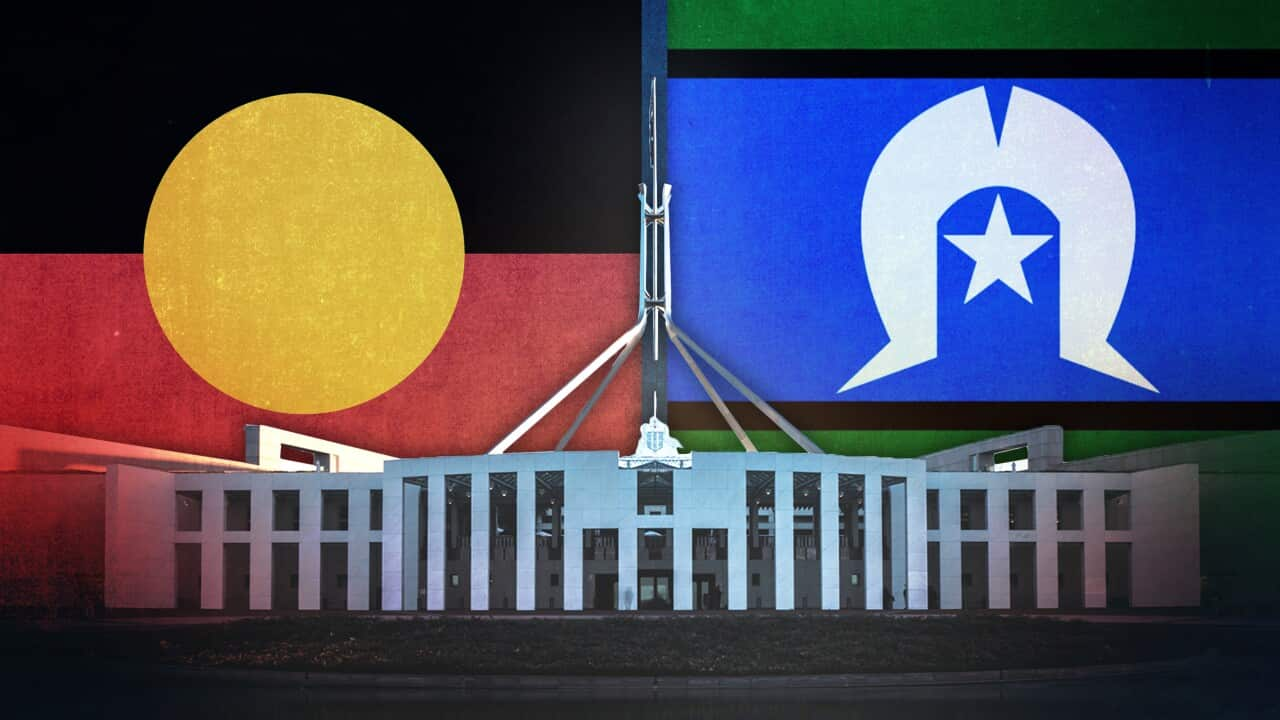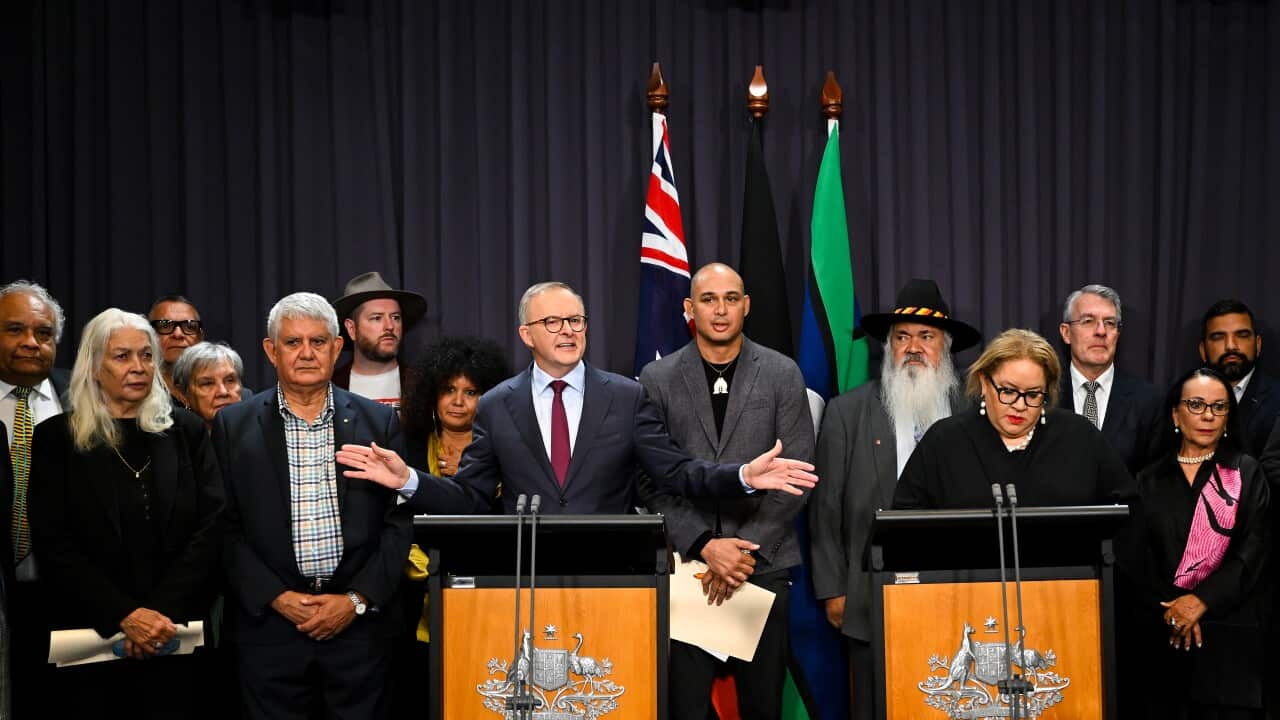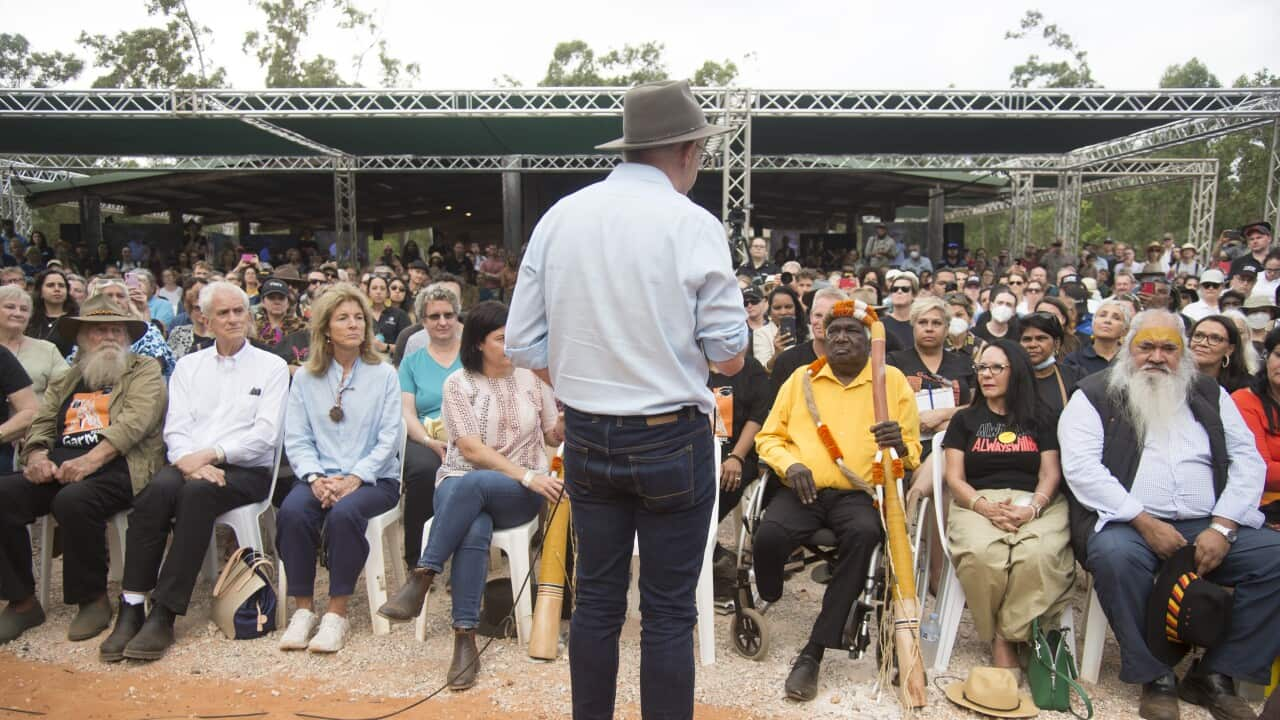KEY POINTS:
- Anthony Albanese has unveiled the wording of the Voice referendum.
- Australians will head to the polls at the end of this year.
- Mr Albanese has revealed fresh details on how the body would function.
Australians now know the words they will vote on at the referendum.
The public will vote in the first referendum in almost a quarter of a century, and if successful, it will be the first time Australians have voted to alter their constitution since 1977.
Speaking after a meeting with the Voice referendum working group on Thursday, Prime Minister Anthony Albanese unveiled the question to be printed on the ballot:
A proposed law: to alter the Constitution to recognise the First Peoples of Australia by establishing an Aboriginal and Torres Strait Islander Voice. Do you approve this alteration?
It'll now go to parliament for a rubber stamp before Australians head to the polls at the end of the year.
What would the Voice look like?
The Voice would be a body advising the government on issues impacting First Nations Australians. It would not have the power to veto laws.
Mr Albanese revealed fresh details on how the body would function, saying:
- Members will have fixed-term dates to "ensure accountability"
- It will be gender balanced and include youth members
- It will draw on representatives from all states and territories
- It will include representatives from specific remote communities
But he would not be drawn on whether members would be democratically elected or appointed.

The question is slightly different to the draft wording Mr Albanese unveiled at the Garma festival last year. Source: AAP / Aaaron Bunch / AAP Image
What are the next steps?
A vote in parliament, then a people's vote.
For a referendum to take place, legislation needs to be put through parliament.
Unusually though, the bill does not need to pass the House of Representatives and the Senate. It could theoretically pass the Labor-held House of Representatives twice, meaning it is all but guaranteed to succeed.
Australian adults will then be required to vote "Yes" or "No" on the question Mr Albanese outlined on Thursday.
A majority of voters, and a majority of voters in most states, are needed to make the Voice a reality.
If that threshold is met, Mr Albanese says a process with Indigenous communities and the broader public will begin to "settle the Voice design".
Once that happens, it would be taken to parliament, like any other law, for debate and a review.
When are we likely to vote?

Mr Albanese has consistently promised to hold the vote by the end of this year.
He narrowed that timeframe down even further last month, suggesting the public will head to the polls between October and December.
Referendums are held on a Saturday, meaning there are only a handful of dates on which the vote could occur.


